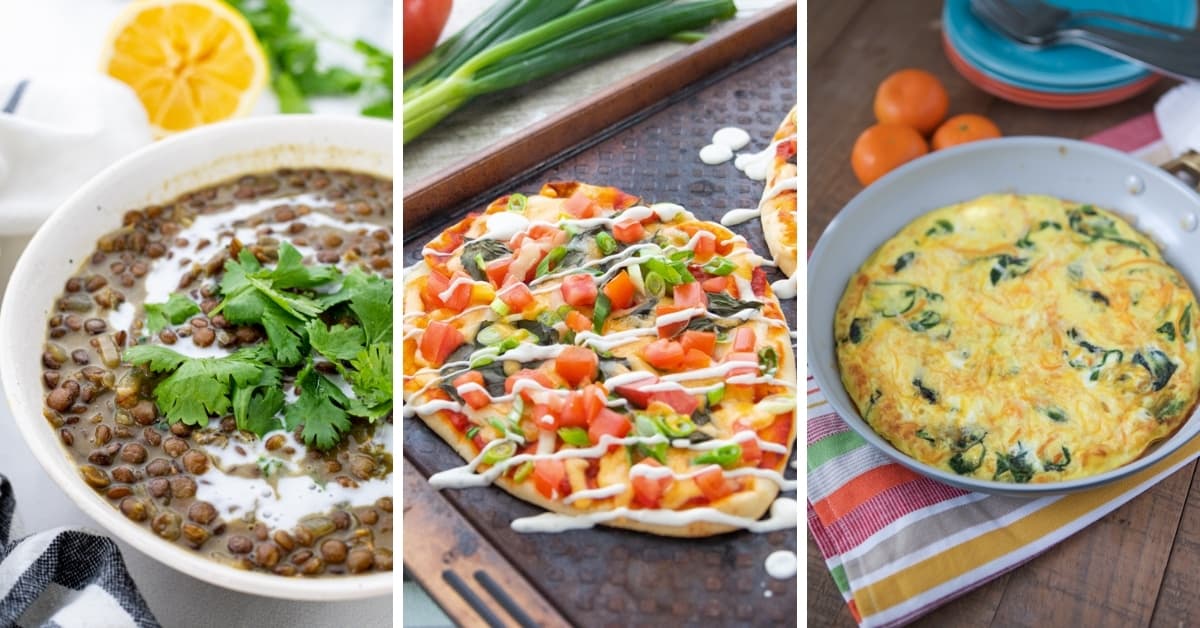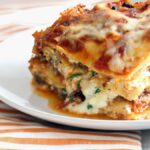Craving delicious, satisfying snacks without breaking the bank or compromising your soy-free lifestyle? Imagine a world of crunchy, flavorful treats made entirely from budget-friendly ingredients, each bite a testament to resourceful cooking and mindful spending. This guide unveils the secrets to crafting a week’s worth of soy-free snacks without sacrificing taste or nutrition, transforming your snack time into an affordable adventure.
We’ll explore a treasure trove of inexpensive, readily available ingredients, transforming them into delectable soy-free snacks using simple recipes and clever meal-prep strategies. Learn how to cleverly substitute soy-based ingredients, master efficient batch cooking techniques, and discover creative flavor combinations that will tantalize your taste buds. From vibrant trail mixes to energy-boosting balls, this guide empowers you to create a diverse and delicious array of snacks, all while keeping your wallet happy.
Affordable Soy-Free Snack Ingredients

Creating delicious and nutritious soy-free snacks doesn’t have to break the bank. Many inexpensive, readily available ingredients can form the base of a wide variety of satisfying and healthy snacks. Careful planning and smart shopping can significantly reduce costs and minimize food waste.
Affordable Soy-Free Snack Ingredients Table
Choosing the right ingredients is key to budget-friendly snack preparation. The following table highlights some inexpensive, widely available options, their nutritional benefits, and potential snack applications. Prices are estimates and can vary based on location and season.
| Ingredient | Typical Cost (per unit) | Nutritional Benefits | Potential Uses in Snacks |
|---|---|---|---|
| Oats (rolled or steel-cut) | $2-$5 per container | High in fiber, provides sustained energy, good source of iron and magnesium. | Oatmeal bars, homemade granola, baked oat cookies. |
| Brown Rice | $3-$6 per bag | Good source of complex carbohydrates, provides sustained energy, contains some fiber. | Rice cakes, rice pudding (using coconut milk), rice crispy treats (using maple syrup as a binder). |
| Bananas | $0.50-$1.50 per banana | Rich in potassium, fiber, and vitamins. | Banana “nice” cream (frozen bananas blended), banana bread (using alternative flours like almond or oat flour), simply sliced and enjoyed. |
| Peanut Butter (check for soy lecithin in ingredients) | $3-$6 per jar | Good source of protein and healthy fats. | Peanut butter and banana sandwiches, energy balls (mixed with oats and dates), added to smoothies. |
| Dried Fruit (raisins, cranberries, apricots) | $4-$8 per bag | Provides natural sweetness, source of fiber and antioxidants. | Trail mix, added to oatmeal or yogurt, eaten as a snack on their own. |
| Nuts and Seeds (sunflower seeds, pumpkin seeds, almonds) | $5-$10 per bag/container | Excellent source of healthy fats, protein, and fiber. | Trail mix, sprinkled on yogurt or oatmeal, eaten as a snack on their own. |
Budget-Friendly Meal-Prep Strategies
Planning ahead is crucial for minimizing waste and maximizing your budget. These three strategies will help you create large batches of soy-free snacks efficiently:
First, batch cooking is your best friend. Prepare large quantities of base ingredients like oatmeal or rice at the beginning of the week. This saves time and energy later. Portion them into individual containers for easy grab-and-go snacks throughout the week.
Second, make-ahead snack mixes are a great option. Combine oats, nuts, seeds, and dried fruit in large batches. Store them in airtight containers for easy access. This reduces the need for individual snack preparations throughout the week.
Third, freeze for later. Many soy-free snacks freeze well. Prepare double batches of things like banana bread or energy balls, and freeze half for later consumption. This prevents spoilage and provides a readily available supply of snacks.
Visual Guide to Soy-Free Snack Ingredient Storage
Imagine a well-organized pantry or refrigerator. Airtight containers are your allies. Dry goods like oats, rice, nuts, and seeds are stored in clearly labeled, airtight containers in a cool, dry place away from direct sunlight. This prevents moisture absorption and pest infestations, preserving freshness and extending shelf life. For example, a glass jar with a tight-fitting lid perfectly preserves oats.
Refrigerate perishable items like peanut butter (to maintain its texture and prevent oil separation) and fresh fruit that is not immediately consumed. Use clear containers to easily see contents and expiration dates. A crisper drawer is ideal for maintaining the freshness of fruits and vegetables. Think of a refrigerator with neatly arranged containers, each clearly labeled with the contents and date of purchase, allowing you to easily see what needs to be used first, minimizing spoilage. Frozen snacks are stored in freezer-safe containers or bags, again clearly labeled with contents and date, organized in a way that allows for easy access and prevents items from getting lost in the back.
Simple Soy-Free Snack Recipes
Creating delicious and affordable soy-free snacks doesn’t require culinary expertise. These simple recipes utilize readily available ingredients and can be easily adapted to suit various dietary needs. Each recipe offers a vibrant burst of flavor and texture, perfect for a quick bite or a satisfying midday treat.
Easy Roasted Chickpeas
These crunchy, flavorful chickpeas are a fantastic source of protein and fiber, making them a perfect guilt-free snack. The roasting process enhances their natural sweetness, creating a satisfying crunch.
- Preheat your oven to 400°F (200°C). Rinse one can (15 ounces) of chickpeas thoroughly and pat them dry with a paper towel. This step is crucial for achieving crispy chickpeas; excess moisture will lead to steaming instead of roasting.
- In a large bowl, toss the chickpeas with 1 tablespoon of olive oil, ½ teaspoon of paprika, ½ teaspoon of garlic powder, and a pinch of salt and pepper. The vibrant red of the paprika contrasts beautifully with the beige of the chickpeas, promising a flavorful experience.
- Spread the chickpeas in a single layer on a baking sheet. Ensure even distribution to prevent uneven cooking and burning.
- Roast for 20-25 minutes, or until golden brown and crispy, shaking the pan halfway through. The aroma of roasting spices will fill your kitchen, signaling the snack’s imminent deliciousness.
Adapting this recipe for gluten-free and vegan diets is effortless, as it is naturally both. For those sensitive to salt, reduce the amount accordingly.
Sweet Potato and Black Bean Salsa
This vibrant salsa combines the sweetness of roasted sweet potato with the earthiness of black beans, offering a delightful blend of flavors and textures. The vibrant colors of the ingredients create a visually appealing snack.
- Preheat your oven to 400°F (200°C). Dice one medium sweet potato into ½-inch cubes. The bright orange of the sweet potato cubes will stand out against the other ingredients.
- Toss the sweet potato cubes with 1 tablespoon of olive oil and roast for 20-25 minutes, or until tender. The soft texture of the roasted sweet potato will contrast beautifully with the firmer black beans.
- While the sweet potato roasts, combine one can (15 ounces) of black beans (rinsed and drained), ½ cup of chopped red onion, ½ cup of chopped cilantro, and the juice of one lime in a bowl. The deep purple of the black beans and the vibrant green of the cilantro create a striking visual contrast.
- Once the sweet potato is cooked, add it to the black bean mixture. Season with salt and pepper to taste. The mixture should have a balanced sweet and savory profile.
This recipe is naturally vegan and gluten-free. For a spicier kick, add a pinch of chili powder or a few slices of jalapeño.
Apple Slices with Peanut Butter
This classic combination provides a satisfying blend of sweet and salty flavors, along with a good dose of healthy fats and fiber. The simple preparation makes it an ideal snack for busy days.
- Wash and slice one apple into thin wedges. The crispness of the apple slices will be complemented by the creamy texture of the peanut butter.
- Spread a generous amount of peanut butter (ensure it’s soy-free) onto each apple slice. The creamy peanut butter will adhere nicely to the apple slices.
This recipe is naturally gluten-free. For a vegan option, ensure your peanut butter doesn’t contain any honey or other animal products. To make it more substantial, add a sprinkle of cinnamon or a few chopped nuts. For those with nut allergies, sunflower seed butter or tahini can serve as delicious substitutes. These substitutions maintain the creamy texture and healthy fats.
Budgeting and Cost-Saving Strategies for Soy-Free Snacking
Embarking on a soy-free diet doesn’t necessitate a hefty price tag. Careful planning and smart shopping can ensure delicious and nutritious soy-free snacks remain accessible, even on a tight budget. This section details strategies for maximizing your snacking budget while maintaining a diverse and satisfying range of options.
Weekly Soy-Free Snack Budget Breakdown
A sample weekly budget for soy-free snacks, focusing on affordability, could look like this: Assume a budget of $25 for a week’s worth of snacks for one person. This budget can be adjusted based on individual needs and local pricing.
| Item | Quantity | Estimated Cost |
|---|---|---|
| Oats (rolled or steel-cut) | 1 lb | $3 |
| Bananas | 6 medium | $2 |
| Apples | 3 medium | $3 |
| Peanut Butter (natural, no added sugar) | 1 small jar | $4 |
| Rice Cakes | 1 box | $3 |
| Popcorn Kernels | 1 bag | $2 |
| Dried Fruit (raisins, cranberries, etc.) | 1 small bag | $4 |
| Nuts (almonds, walnuts, etc.) | 1 small bag | $4 |
| Seeds (sunflower, pumpkin, etc.) | 1 small bag | $4 |
This budget prioritizes whole, unprocessed foods that are naturally soy-free and offer good nutritional value. Prices may vary depending on location and sales. Substituting cheaper options, such as buying larger quantities of staples in bulk, can further reduce costs.
Avoiding Unnecessary Soy-Free Snack Expenses
Falling into the trap of buying expensive, pre-packaged “soy-free” snacks is a common budgeting pitfall. These often contain added sugars, preservatives, and artificial ingredients, inflating the cost significantly.
- Avoid pre-packaged convenience foods: Opt for whole foods instead. Making your own snacks is significantly cheaper.
- Read labels carefully: Hidden soy ingredients can be found in unexpected places like bread, processed meats, and even some spices. Always double-check.
- Plan your meals and snacks: A shopping list based on planned meals and snacks minimizes impulse purchases.
- Take advantage of sales and coupons: Check weekly flyers for discounts on staple ingredients.
Utilizing Leftovers and Reducing Food Waste
Minimizing food waste is a powerful tool for budget management. Leftovers from meals can easily be repurposed into delicious and cost-effective snacks.
- Repurpose leftover cooked grains: Leftover rice or quinoa can be combined with nuts, seeds, and dried fruit for a hearty snack mix.
- Use leftover vegetables: Chop up leftover roasted vegetables to add to salads or snack on them with hummus.
- Freeze extra portions: Freeze individual portions of homemade snacks like granola bars or muffins for easy access later.
- Proper storage: Store food properly to extend its shelf life and reduce waste.
Embarking on a soy-free snacking journey needn’t mean compromising on taste or affordability. By harnessing the power of simple recipes, strategic meal prepping, and creative ingredient substitutions, you can effortlessly craft a week’s worth of delicious and nutritious snacks without exceeding your budget. Remember the key is planning, efficient storage, and embracing the joy of culinary experimentation. So, ditch the expensive, pre-packaged snacks and unleash your inner chef – your taste buds and your wallet will thank you!
Key Questions Answered
What if I’m allergic to other ingredients besides soy?
Many of the recipes can be easily adapted to accommodate other dietary restrictions. The guide emphasizes ingredient substitutions to cater to various needs, ensuring inclusivity for diverse dietary requirements.
How long will these soy-free snacks last?
Proper storage is key. The guide provides detailed instructions on storing different types of snacks to maximize their shelf life and prevent spoilage, extending the enjoyment of your creations.
Can I freeze soy-free snacks?
Yes, many soy-free snacks freeze well. The guide will offer specific guidance on which snacks are suitable for freezing and the best freezing techniques to maintain quality.
Where can I find affordable soy-free ingredients?
Bulk buying, shopping at discount stores, and utilizing seasonal produce are excellent strategies for keeping costs down. The guide offers specific tips and resources for sourcing affordable ingredients.


